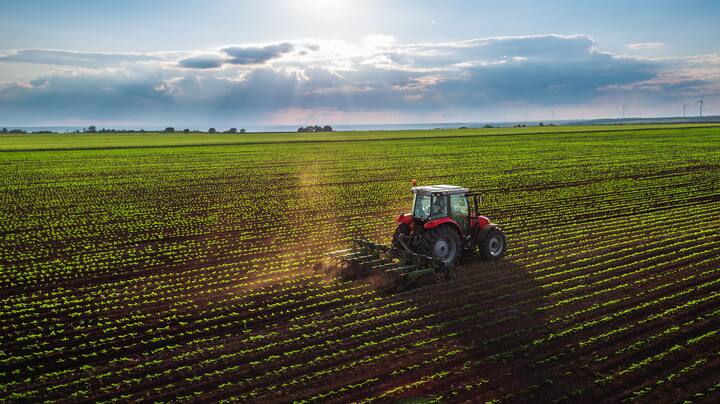
Healthy soil: measuring is knowing
18 December 2024
Crops grow better in healthy soil. They are more resistant to extreme weather conditions (drought and flooding), soil diseases and pests. There are various methods available that contribute to healthy soil, but not every method is suitable for every type of soil and crop. How do you approach this?
Now that the use of (artificial) fertilisers and chemical agents is increasingly restricted, soil health is becoming more important. Healthy soil requires extra attention from the grower. There are various methods available that contribute to healthy soil. These include non-inversion tillage, direct sowing (sowing crops directly into old stubble without prior tillage), green manure and soil improvers. Not every method is suitable for every soil and crop. It is not always clear what you need to do to improve soil health, and the effects are often not immediately noticeable in the short term.
Why is soil life important?
Soil life has a major influence on plant growth. Soil life must release the nutrients that are essential for plants from organic manure, crop residues and green manure. Soil life also has various other functions. These can be divided into the following categories:
Decomposition of plant residues, manure and dead soil organisms and release of nutrients from these
(mineralisation) Building up organic matter that breaks down slowly (humus formation, humification)
Building up a good soil structure
Loosening compacted soil by digging tunnels
Forming mucilage that binds soil particles together
Mixing organic and inorganic soil components
Limiting excessive numbers of disease-causing organisms
The extent to which different species contribute to the above effects varies greatly between species. The extent to which different species occur in a soil also varies greatly depending on soil type and soil use.
What exactly does soil life do?
The organic remains of plant or animal origin are first converted by bacteria and fungi. This releases nutrients that are available to the plant. However, many nutrients are also absorbed by these fungi and bacteria and are then unavailable to the plant. Bacteria and fungi are eaten by many organisms, which in turn release the bound nutrients. An important group that feeds on bacteria and fungi are organisms that consist of only one cell: protozoa. These live in a thin film of water around the soil particles. When the soil is sufficiently moist, they can develop optimally and nutrients can be released.After protozoa, nematodes are an important group in terms of weight. They generally live off other living organisms and can be harmful when they attack the roots of cultivated plants. However, most nematodes are not harmful and live on bacteria, fungi, nematodes and algae. The first group that we can see with the naked eye are springtails and mites. Springtails can often be found dead in puddles on the ground in autumn. The small grey creatures that jump up when a houseplant is watered are also springtails. Springtails and mites feed on fungi and bacteria. Some crawl through existing tunnels, while others create their own tunnels and thus influence the soil structure. There are also predatory mites that feed on other soil animals. Worms are a very important group. They are particularly important because of their digging activity, their size and their ability to break down coarse plant debris. There are several species, all with specific lifestyles.
Measuring is knowing
Soil life is not homogeneous throughout the soil. It concentrates in specific places where balances sometimes arise that are strongly isolated from each other. In addition, soil life depends on how the soil is used. Periodic sampling and monitoring of soil life in the soil provides a good picture of the development of soil life and thus soil health. This allows growers to gain a better understanding of the effects of the methods they use to improve soil health. So, measuring is knowing, but measuring soil life is not easy. There are several methods available, most of which are approximations of reality. At Normec Foodcare, we have developed a method that allows different types of soil organisms to be isolated from the soil and the actual number of each type to be determined. This provides the most reliable picture of the composition of soil life. Performing representative sampling is essential for a reliable analysis. We can take the sample for you in the correct manner. Thanks to our many years of experience in the field of soil health, we can also interpret the analysis results and advise you on any follow-up steps.
We can perform the following analysis packages:
Soil life soil flora | Aerobic bacteria, Anaerobic bacteria, Sulphite-reducing bacteria, Total yeasts, Total moulds, Actinomycetes |
Soil life screening microfauna | Protozoa, Amoebas, Tardigrades, Rotifers and Nematodes (including plant-parasitic species) |
Soil life screening mesofauna | Earthworms, pot worms, springtails, mites, millipedes, centipedes and beetle larvae. |
Would you like to know more about how we can measure your soil life?
Author: Marieke Mooi
Managing Director Normec Dumea